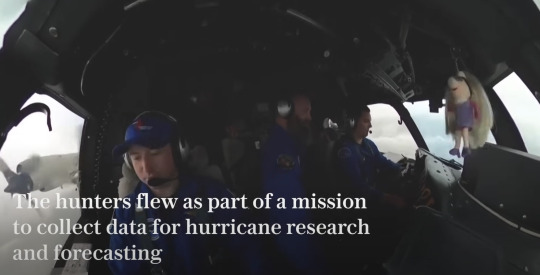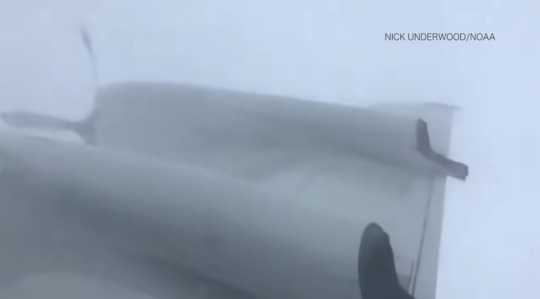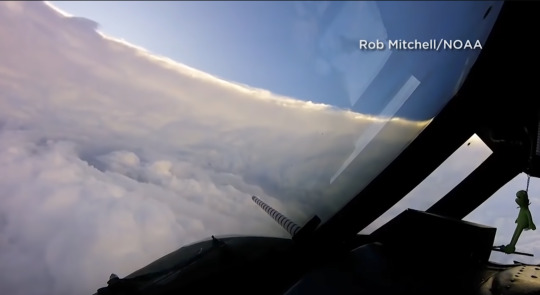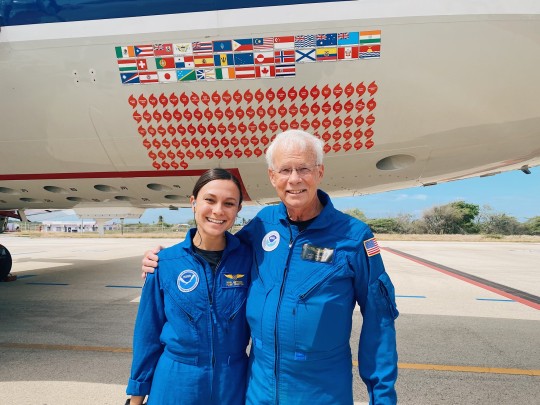#Gulfstream IV
Explore tagged Tumblr posts
Text

Gulfstream G450 taxing into King County International Airport, Seattle
#Gulfstream#G450#GIV#Gulfstream IV#Bizjet#business jet#airplane#aircraft#Boeing Field#KBFI#jet#private jet#executive transport
13 notes
·
View notes
Text

Clearly a Gulfstream but I'm not sure exactly which type. G-IV maybe?
(also door on the wrong side)
11 notes
·
View notes
Text
Elon Musk will be pleased that his surprise jaunt to China on Sunday garnered many glowing headlines. The trip was undoubtedly equally a surprise to Indian prime minister Narendra Modi, who had been scheduled to offer Musk the red carpet on a long-arranged visit.
The billionaire blew off India at the last minute, citing “very heavy Tesla obligations.” Indeed, Tesla has had a tumultuous couple of weeks, with federal regulator slap-downs, halved profits, and price-cut rollouts. Yet, in a very public snub that Modi won’t quickly forget, the company CEO made time for Chinese premier Li Qiang. And well Musk might. Tesla needs China more than China needs Tesla. After the US, China is Tesla’s second biggest market. And ominously, in the first quarter of the year, Tesla’s sales in China slipped by 4 percent in a domestic EV market that has expanded by more than 15 percent. That’s enough of a hit for any CEO to jump in a Gulfstream and fly across the Pacific for an impromptu meeting with a Chinese premier. Globally, Tesla has lost nearly a third of its value since January, and earlier this month, Tesla’s worldwide vehicle deliveries in the first quarter fell for the first time in almost four years. As they are wont to do, Tesla investors continue to complain over repeated delays to the company’s rollout of cars with genuine driverless capabilities.
One of Tesla’s stop-gap technologies—a now heavily-discounted $8,000 add-on—is marketed as Full Self-Driving, or FSD. But, like the similarly confusingly named Autopilot feature, it still requires driver attention, and may yet still prove to be risky. Among the deals said to have been unveiled at Sunday’s meeting with Li Qiang was a partnership granting Tesla access to a mapping license for data collection on China’s public roads by web search company Baidu. This was a “watershed moment,” Wedbush Securities senior analyst Dan Ives said in an interview with Bloomberg Television. However, Tesla has been using Baidu for in-car mapping and navigation in China since 2020. The revised deal, in which Baidu will now also provide Tesla with its lane-level navigation system, clears one more regulatory hurdle for Tesla’s FSD in China. It does not enable Tesla to introduce driverless cars in China or anywhere else, as some media outlets have reported. Press reports have also claimed that Musk has secured permission to transfer data collected by Tesla cars in China out of China. This is improbable, noted JL Warren Capital CEO and head of research Junheng Li, who wrote on X: “[Baidu] owns all data, and shares filtered data with Tesla. Just imagine if [Tesla] has access to real-time road data such as who went to which country’s embassy at what time for how long.” That, she stressed, would be “super national security!” According to Reuters, Musk is still seeking final approval for the FSD software rollout in China, and Tesla still needs permission to transfer data overseas. Li added that a rollout of even a “supervised,” data-lite version of FSD in China is “extremely unlikely.” She pointed to challenges for Tesla to support local operation of the software. Tesla still “has no [direct] access to map data in China as a foreign entity,” she wrote. Instead, Tesla is likely using the deal extension with Baidu as an FSD workaround, with the data collected in China very much staying in China. Despite this, Tesla shares have jumped following news of the expanded Baidu collaboration. Furthermore, Li said there’s “no strategic value” for Beijing to favor FSD when there are several more advanced Chinese alternatives. (We’ve tested them.)
“Chinese EVs are simply evolving at a far faster pace than Tesla,” agrees Shanghai-based automotive journalist and WIRED contributor Mark Andrews, who tested the driver assistance tech available on the roads in China. The US-listed trio of Xpeng, Nio, and Li Auto offer better-than-Tesla “driving assistance features” that rely heavily on lidar sensors, a technology that Musk previously dismissed, but which Tesla is now said to be testing. Although dated in shape and lacking in the latest tech, a Tesla car is nevertheless more expensive in China than most of its rivals. Tesla recently slashed prices in China to arrest falling sales. Musk’s flying visit to China smacked of “desperation,” says Mark Rainford, owner of the Inside China Auto channel. “[Tesla] sales are down in China—the competition has weathered the price cuts so far and [the Tesla competitors have] a seemingly endless conveyor belt of talented and beautiful products.” Rainford further warns that the “golden period for Tesla in China” is “at great risk of collapsing.” Tesla opened its first gigafactory in Shanghai five years ago, and it is now the firm’s largest—but the automaker has been playing tech catchup in China for some time. In addition to Xpeng, Nio, and Li, there are other Chinese car companies competing with Tesla on autonomous driving, as Musk will see if he visits the Beijing Motor Show, which runs through this week.
Beijing is now arguably the world’s preeminent automotive expo, but Tesla is not exhibiting—a sign that it has little new to offer famously tech-hungry Chinese autobuyers. Pointedly, the Cybertruck is not road-legal in China, although that hasn’t stopped Tesla from displaying the rust-prone electric pickup in some of its Chinese showrooms. Likewise, Tesla has just announced plans for a European Cybertruck tour. But, just like in China, the EV pickup cannot be sold in the EU, either—and according to Tesla's lead on vehicle engineering, it likely never will be.
Speaking on tighter pedestrian safety regulations in the EU compared to the US, Tesla’s vice president of vehicle engineering, Lars Moravy, told Top Gear that “European regulations call for a 3.2-mm external radius on external projections. Unfortunately, it’s impossible to make a 3.2-mm radius on a 1.4-mm sheet of stainless steel.”
The “Cybertruck Odyssey” tour—as Tesla’s European X account calls it—may titillate Tesla fans, but it could prove to be about as useful as shooting a Roadster into space.
29 notes
·
View notes
Text
Excerpt from this story from the BBC:
Atmospheric river storms have wreaked havoc on the West Coast, and are getting bigger. These scientists chase them in the sky to predict where they will strike.
In January 2024, Anna Wilson was sitting aboard a Gulfstream IV jet, observing a deceptively calm-looking sea of white clouds over the northern Pacific Ocean. Through her headphones, Wilson – an atmospheric scientist and extreme weather expert – could hear her colleague give a countdown. At the back of the plane, another colleague dropped slim, cylindrical instruments through a chute, into the brewing storm below them, to measure its strength as it approached the US West Coast.
The type of storm they were tracking is known as an atmospheric river – a weather phenomenon that has been attracting more and more attention in recent years, as scientists and the public race to understand its sometimes devastating impact. Research suggests that atmospheric rivers are getting bigger, more frequent and more extreme, due to climate change; and the damage they cause is getting worse.
Often described as rivers in the sky, atmospheric rivers are a huge, invisible ribbons of water vapour. Each can be several hundreds of kilometres wide, and transport 27 times as much water as the Mississippi River. They are born in warm oceans, as seawater evaporates, rises and moves to cooler latitudes. When the vapour reaches a coast, such as California, it flows up a mountain, cools, and comes down as rain or snow – enough to wash down hillsides causing landslides, and bring torrential rain, floods and deadly avalanches.
On the US West Coast, atmospheric rivers bring the heaviest rains, warmest storms, major floods, extreme coastal winds, and landslides. They can come in groups – known as "families" – with several of them striking a place within days. The brewing family of storms Wilson and her colleague were flying over was in fact formed by four atmospheric rivers, which later caused heavy snowfall in California and floods in Oregon in January 2024.
The basic questions remain the same for each atmospheric river, says Wilson, a field research manager at Scripps Institution of Oceanography at the University of California San Diego. "Where is it going to make landfall? How strong will it be? How long will it last? And we continue to get better at [answering] that," she says.
The flight Wilson was on in January was part of Atmospheric River Reconnaissance, or AR Recon, a joint project with the US Air Force, the National Oceanic and Atmospheric Administration (Noaa) and other partners. Using "hurricane hunter" aircraft normally deployed for observing hurricanes – the NOAA Gulfstream jet, as well as two or more Air Force aircraft – teams of scientists fly over atmospheric rivers, and drop instruments called dropsondes into them.
"Atmospheric rivers are interesting and cool but you can't see them, actually, because it's water vapour," Wilson says. "And they're really close to the surface, they are usually focused on the lowest few kilometres of the atmosphere."
Wilson points out that they tend to travel under cloud cover, which hides them from conventional weather observation tools like satellites. "It's really hard for the satellites to sort of see through that, to what's going on at the near-surface. So the point of flying the aircraft through them is to be able to drop our sensors, and get these foundational meteorological measurements – temperature, air pressure, wind and moisture," she says.
The atmospheric rivers Wilson and her team were monitoring in January were part of a series of 51 atmospheric rivers that hit Washington, Oregon and California between autumn 2023 and spring 2024, 13 more than the previous season. Knowing when and where such a storm will arrive, and how powerful it is, helps people on land prepare for what's coming, and for example, empty the right reservoirs in time. But Wilson and her colleagues' flights, which started in 2016, are also part of a wider scientific effort to better understand atmospheric rivers – including their surprising benefits.
4 notes
·
View notes
Text

Ernesto Barrels Toward Bermuda
After battering Puerto Rico, Ernesto picked up steam over the western Atlantic Ocean as it moved toward Bermuda. The Category 2 hurricane was expected to pass near or over the island on August 17, 2024, generating dangerously large waves along the Atlantic shore of the U.S. and Canada.
This image, acquired with the VIIRS (Visible Infrared Imaging Radiometer Suite) on the Suomi NPP satellite, shows Ernesto at about 18:00 Universal Time (3 p.m. local time in Bermuda) on August 15, when the center of the storm was 530 miles southwest of the British island territory. At the time, Ernesto had sustained winds of around 85 miles (140 kilometers) per hour and was continuing to strengthen.
Earlier in the week, Ernesto moved through the Leeward Islands, Virgin Islands, and eastern Puerto Rico, bringing torrential rains and wind gusts near hurricane strength. According to news reports, the storm knocked out power for about half of Puerto Rico’s residents and dumped 3 to 10 inches (8 to 25 centimeters) of rain over much of the island. The storm flooded roadways, downed power lines, and destroyed homes and vehicles.
As Ernesto moved north from Puerto Rico, NASA scientists teamed up with NOAA to drop small sensors into and around the storm to better understand how the storm was changing. On August 15, 35 dropsondes were released from NOAA’s Gulfstream IV jet from 40,000 feet above the Atlantic. As the dropsondes careened through the storm, they measured temperature, moisture, pressure, and wind conditions.
“Dropsonde data indicated that dry air along Ernesto’s path likely prevented it from becoming an even more powerful storm,” said Justin Stachnik, an atmospheric scientist at NASA Headquarters. “These dropsondes give scientists and weather forecasters a better picture of the moisture present near the storm, and they can retrieve measurements near the surface, where it’s not safe for aircraft to fly.”
The dropsonde measurements can be used to calibrate and validate simultaneous observations from satellites that are part of NASA’s TROPICS mission—a constellation of CubeSats designed to provide high-resolution, rapid updates of the intensity, size, and precipitation of tropical cyclones. “Calibrating satellite observations with these in-air measurements will allow NASA to better provide near-real-time monitoring of storms,” Stachnik said.
Although Ernesto was not expected to hit the mainland U.S., high surf and rip currents from the hurricane were expected to spread up the east coast on August 17 and 18 and could reach portions of Atlantic Canada.
NASA’s Disasters program has been activated in response to Hurricane Ernesto, working with the Puerto Rico Science, Technology, & Research Trust and the Puerto Rico Department of Public Safety to support response activities. As new information becomes available, the team will be posting maps and data products on its open-access mapping portal.
NASA Earth Observatory image by Wanmei Liang, using VIIRS data from NASA EOSDIS LANCE, GIBS/Worldview, and the Suomi National Polar-orbiting Partnership. Story by Emily Cassidy.
2 notes
·
View notes
Text
In just one cross-country trip, a single private jet, the Gulfstream IV, emits nearly double the CO2 that the average American emits in an entire year. Owning and flying in a private jet is a reckless behavior in times of climate crisis, and the billionaire, private jet–owning class are conspicuous carbon consumers.
54K notes
·
View notes
Text
У российских границ зафиксирована аномальная активность авиации НАТО
25 марта 2025 года, вблизи северо-западных границ России зафиксирована работа сразу двух разведывательных самолётов НАТО. Оба воздушных судна, выполняющих задачи радиоэлектронной разведки, сосредоточили своё внимание на ключевых приграничных регионах страны. По данным военных источников, первый борт — Gulfstream IV, принадлежащий Военно-воздушным силам Швеции, — осуществляет мониторинг вдоль границы в районе Санкт-Петербурга. Второй самолёт, Bombardier Challenger 650 Artemis, действует в более ш... Читать дальше »
0 notes
Text
Empty Leg, Private Jet
Kindly see list of available Reduced Price Empty Leg flights. Check out these and many more available Legs in North America, Europe, and Asia. #affiliate #villiersprivatejetcharter To see more or book a flight, visit https://www.villiersjets.com/?id=8181** or you can PM📩 me for more details.
7/2/2025 Las Vegas, NV ✈️ West Palm Beach, FL Citation X Pax "8"
7/2/2025 Cape Town ✈️ Rotterdam Global Express XRS Pax "13" From 80,237 GBP
7/2/2025 Dubai ✈️ Biggin Hill Global 6000 Pax "13" From 78,632 GBP
8//2025 Cancun ✈️ Chicago, IL Hawker 400XP Pax "8" From 18,000 USD
8/2/2025 San Jose ✈️ Tampa, FL Gulfstream G-650ER Pax "13" From 53,100 USD
8/2/2025 Paris ✈️ Houston, TX Global 600 Pax "12"
9/2/2025 West Palm Beach ✈️ Farnborough Global 6500 Pax "12" 88,000 EUR
9/2/2025 West Palm Beach, FL ✈️ Seattle, WA Gulfstream G-IV Pax "14"
9/2/2025 Houston ✈️ Palm Spring Citation V Pax "6" 14,000 USD
10/2/2025 Singapore ✈️ Zurich Falcon 7X Pax "12"
10/2/2025 Tampa, FL ✈️ Chicago/Wheeling, IL Citation XLS Pax "9" From 13,000 USD
10/2/2025 Farnborough ✈️ Dubai Global 6500 Pax "13" 80,000 EUR
Regards.
0 notes
Text
Policía de Guinea-Bissau incauta más de 2 toneladas de cocaína en un avión procedente de Venezuela
Voz de América – Redacción Agentes de la policía judicial de Guinea-Bissau confiscaron 78 fardos de drogas que fueron contrabandeados en un avión Gulfstream IV procedente de Venezuela. Los cinco tripulantes de un avión Gulfstream IV procedente de Venezuela con 2,63 toneladas de cocaína comparecen el lunes ante un tribunal regional de Guinea-Bissau, país del oeste de África donde fue incautado…
0 notes
Text
op how could you leave out gonzo 😢
NOAA has a third member of its hurricane fleet and that is Gonzo the Gulfstream-IV


NOAA has a whole blog post about these aircraft and their backstory: https://celebrating200years.noaa.gov/magazine/muppets/welcome.html


This is especially frustrating because the only reason we know the wind speed is because NOAA's Hurricane Hunters literally fly into the hurricane and collect vital data. They fly in and out of the storm over and over in 8 hour shifts.
This brave team flies two identical Lockheed P3s called Kermit and Miss Piggy.

You can see the dangling ornaments in the videos to determine which plane they are in.

And when I say they fly into the hurricane, I mean they fly *into* the hurricane.

Here they are in the eye of Milton.

And here they are in the eye of Irma.

youtube
As you may notice, this flight was in Kermit.
So the next time you see live data about a hurricane's wind speed and pressure, just remember how that was collected and don't be a giant turd about it.

And please vote because conservatives want to kill NOAA.

#anyway the name cat turd must be in reference to twitter dude's brain composition#bc i'm p sure everyone who's ever been outside knows wind is easily the most erratic weather variable out there#when i did weather obs we had to take 1-min wind averages bc guess what? even in the course of 1 min the speed/direction changes a lot#weather#meteorology
60K notes
·
View notes
Text
NASA G-IV Plane Will Carry Next-Generation Science Instrument
In June 2024, a new tail number swept the sky above NASA’s Armstrong Flight Research Center in Edwards, California. Pilots conducted flights of a Gulfstream IV (G-IV) to evaluate its handling characteristics and to familiarize pilots with it before it begins structural modifications. The research plane is joining the center’s fleet serving NASA’s Airborne Science […] from NASA https://ift.tt/uoCQU8s
0 notes
Text

In the chocks at San Diego
3 notes
·
View notes
Text
Tom Cruise's Need for Speed: Inside His Jet Ownership

Tom Cruise is renowned for his roles in action-packed films, and his passion for aviation is no less thrilling. Beyond the screen, Cruise owns an impressive fleet of jets that cater to his need for speed and luxury. This article explores the various aircraft in Tom Cruise's collection, the reasons behind his passion for flying, and the features that make his jets exceptional. By the end, you'll have a comprehensive understanding of Tom Cruise's jet ownership and the high-flying lifestyle that accompanies it.
The P-51 Mustang
One of the most notable planes in Tom Cruise's fleet is the vintage P-51 Mustang, a World War II-era fighter aircraft. This iconic plane, often seen in the movie "Top Gun: Maverick," is a testament to Cruise's deep appreciation for aviation history. The P-51 Mustang, known for its powerful performance and historical significance, was produced in 1944 and later purchased by Cruise for an estimated $4 million. This aircraft isn't just a showpiece; Cruise actively flies it, often sharing the experience with friends and co-stars.
The P-51 Mustang, with its distinctive design and historical value, represents more than just a flying machine for Cruise; it symbolizes a connection to aviation's golden age. Cruise has even customized the aircraft with personal touches, such as naming it "Montana Miss," a nod to his personal connections. This level of personalization underscores his passion and commitment to aviation. Moreover, the P-51's unique history, performance capabilities, and sentimental value make it a prized possession in Cruise's collection. This fighter plane’s speed and agility also highlight Cruise's need for speed and his appreciation for high-performance aircraft.
The Gulfstream IV G4
Another jewel in Cruise's aviation crown is the Gulfstream IV G4, a symbol of luxury and high performance. Valued at approximately $20 million, this jet is equipped with lavish amenities including a private movie theater, a Jacuzzi, and a spacious cabin that can accommodate up to 19 passengers. The Gulfstream IV is powered by two Rolls-Royce Tay 611-8 turbofan engines, providing a range of 4,220 nautical miles and a top speed of Mach 0.88, making it perfect for long-haul international travel.
The Gulfstream IV is not only about luxury but also about efficiency and reliability. Its long-range capabilities allow Cruise to travel globally with ease, bypassing the delays and inconveniences of commercial air travel. The jet's interior is tailored to Cruise's taste, ensuring that he can travel in utmost comfort and privacy. The Gulfstream IV’s luxurious features, such as the private movie theater and Jacuzzi, make it an ideal choice for both relaxation and entertainment during flights. Additionally, the spacious cabin with its plush seating and advanced amenities underscores Cruise's penchant for comfort and style, making every journey a luxurious experience.
The HondaJet HA-420
While not officially confirmed, strong evidence suggests that Tom Cruise owns a HondaJet HA-420. This light business jet is known for its efficiency and performance. The HondaJet features two engines and can reach speeds of around 500 mph with a range of 1,200 nautical miles. It is designed to be economical yet luxurious, providing Cruise with a versatile option for shorter trips and more intimate travel settings.
The HondaJet's design includes advanced aerodynamics and innovative features such as over-the-wing engine mounts, which reduce drag and improve fuel efficiency. This jet allows Cruise to enjoy quick, efficient travel while still experiencing the luxury and performance expected from a private aircraft. The HondaJet’s compact size and efficiency make it perfect for regional travel, allowing Cruise to fly into smaller airports and access a wider range of destinations with ease.
The Bombardier Challenger 300
Tom Cruise's aviation collection is rumored to include a Bombardier Challenger 300, though this has not been officially confirmed. This jet offers a perfect blend of performance and comfort, with dual engines, seating for up to 10 passengers, and a range of approximately 3,220 miles. The Challenger 300 is known for its reliability and smooth ride, making it a popular choice among business travelers and celebrities alike.
The Challenger 300's spacious cabin and advanced avionics make it an ideal aircraft for both business and leisure. Its ability to operate from shorter runways also adds to its versatility, allowing Cruise to access a wider range of destinations. The jet’s state-of-the-art technology and comfortable interior ensure that Cruise can travel in style and efficiency, whether he’s heading to a film shoot or a personal getaway.
Tom Cruise as a Licensed Pilot
Tom Cruise's dedication to aviation goes beyond ownership; he is also a licensed pilot. He obtained his pilot's license in 1994 and has since become proficient in flying various types of aircraft. This hands-on approach allows Cruise to fully immerse himself in his passion for aviation, piloting his planes and experiencing the thrill of flight firsthand.
Cruise's pilot credentials add a layer of authenticity to his roles in aviation-themed films and underscore his genuine enthusiasm for flying. His ability to pilot his own aircraft enhances his freedom and flexibility, enabling him to travel on his own terms and schedule. This skill not only reflects his commitment to his craft but also his desire for control and independence in his personal and professional life. Cruise’s proficiency as a pilot allows him to enjoy the full experience of aviation, from takeoff to landing, and everything in between.
The Benefits of Private Jet Ownership
For celebrities like Tom Cruise, owning a private jet offers significant advantages. Private jets provide unparalleled convenience, allowing owners to avoid long check-in lines, delays, and the lack of privacy associated with commercial flights. They also offer enhanced security and the ability to travel to destinations not served by commercial airlines. For Cruise, these benefits are crucial, given his demanding schedule and need for discretion.
Private jet ownership also allows for customization and personalization, ensuring that the aircraft meets the specific needs and preferences of the owner. For Cruise, this means having the freedom to design his jets' interiors to reflect his style and requirements, making each flight a comfortable and enjoyable experience. The ability to travel on his own terms, with personalized service and amenities, adds a level of convenience and luxury that is unmatched by commercial air travel. Additionally, private jets offer the flexibility to fly on short notice and access remote locations, further enhancing Cruise’s ability to manage his busy lifestyle.
The Luxury and Security of Private Jets
Owning a private jet gives Tom Cruise ultimate control over his travel experience. Private jets are typically outfitted with luxurious amenities such as master bedrooms, entertainment systems, and gourmet kitchens. These features provide a level of comfort and convenience that is unmatched by commercial air travel. Additionally, the security and privacy afforded by private jet ownership are invaluable for high-profile individuals like Cruise.
The ability to travel discreetly and securely is a significant benefit for celebrities, who often face intense public scrutiny. Private jets enable Cruise to maintain his privacy and avoid unwanted attention, allowing him to focus on his work and personal life without the disruptions often associated with commercial travel. The enhanced security measures and private terminals used by private jet owners also provide peace of mind, ensuring that Cruise can travel safely and efficiently. Furthermore, the exclusivity and personalization of private jet travel offer a unique and luxurious experience that aligns with Cruise’s high standards and lifestyle.
In Conclusion
Tom Cruise's passion for aviation is evident in his impressive collection of aircraft and his dedication to flying. From the vintage P-51 Mustang to the luxurious Gulfstream IV, each plane in Cruise's fleet reflects his love for speed, performance, and comfort. As a licensed pilot, Cruise takes his passion to the skies, enjoying the freedom and flexibility that private jet ownership provides. By understanding the benefits and features of his aircraft, we gain insight into the high-flying lifestyle of one of Hollywood's most iconic stars. Whether for work or leisure, Tom Cruise's need for speed is perfectly catered to by his exceptional fleet of jets. His collection not only showcases his commitment to aviation but also highlights the advantages of private jet ownership, from convenience and luxury to security and privacy.
0 notes
Text
Swedish Air Force Deploys S106 GlobalEye AEW&C at Uppsala Air Base
The Swedish Air Force has announced the deployment of the S106 GlobalEye Airborne Early Warning and Control System (AEW&C) at Uppsala Air Base. The decision, revealed by Swedish Air Force Chief Jonas Wikman on May 15, 2024, marks a significant milestone in Sweden's defense modernization efforts. The selection of Uppsala Air Base as the home for the S106 GlobalEye aircraft follows a meticulous evaluation process aimed at maximizing operational effectiveness over an extended period. Factors such as infrastructure readiness, organizational dynamics, recruitment conditions, and environmental considerations were thoroughly analyzed by various departments within the Air Staff. Importantly, feedback from all organizational units within the Air Force played a pivotal role in shaping this decision. The genesis of this move can be traced back to the Swedish Ministry of Defence's (MoD) defense bill for the period 2021-2025, where the need for a new airborne early warning and control system was highlighted as a top priority. With the existing Airborne Surveillance & Control (ASC) Saab S100D aircraft reaching their operational limits, the imperative for a modern replacement became evident. While the two S102B Korpen SIGINT modified Gulfstream IVs are slated for maintenance, no replacement plans were scheduled until after 2025. Saab announced on June 30, 2022, that the Swedish Defence Material Administration (FMV) had placed an order for two GlobalEye AEW&C aircraft, with an option for two more. Scheduled for delivery in 2027, the GlobalEye platform represents a leap forward in airborne surveillance capabilities. #military #defense #defence #militaryleak #saab #sweden
The Swedish Air Force has announced the deployment of the S106 GlobalEye Airborne Early Warning and Control System (AEW&C) at Uppsala Air Base. The decision, revealed by Swedish Air Force Chief Jonas Wikman on May 15, 2024, marks a significant milestone in Sweden’s defense modernization efforts. The selection of Uppsala Air Base as the home for the S106 GlobalEye aircraft follows a meticulous…

View On WordPress
0 notes
Text

airsLLide 16007: HB-ITX, G.1159 Gulfstream IV, Privatair, Samedan, January 31, 1999.
Speaking of winter: Samedan airport serves the well-known resort town of St. Moritz, with business jet operators flocking in especially on weekends.
0 notes
Text

NASA G-IV plane will carry next-generation science instrument
In June 2024, a new tail number swept the sky above NASA's Armstrong Flight Research Center in Edwards, California. Pilots conducted flights of a Gulfstream IV (G-IV) to evaluate its handling characteristics and to familiarize pilots with it before it begins structural modifications. The research plane is joining the center's fleet serving NASA's Airborne Science program.
The G-IV will carry the Next Generation Airborne Synthetic Aperture Radar (AIRSAR-NG), which sends and receives microwave signals to collect information about Earth's topographic features and how they change over time. The goal for the team at NASA Armstrong is to modify the G-IV to accommodate three radars simultaneously.
"The AIRSAR-NG will be composed of three different Synthetic Aperture Radar antennas in one instrument to provide new insight into Earth's surface more efficiently," said Yunling Lou, principal investigator for the instrument at NASA's Jet Propulsion Laboratory in Southern California.
"The capabilities of this new instrument will facilitate new techniques, such as three-dimensional imaging, that will be useful for future space-borne missions."
With those and other modifications being made, the G-IV will also be able to accommodate an increased load of science instruments, which could enable NASA to support more dynamic airborne science missions.
"This aircraft will aid Armstrong in continuing our long history of supporting airborne science for the agency and maintain the expertise in conducting successful science missions for years to come," said Franzeska Becker, the G-IV project manager at NASA Armstrong.
Transferred in February from NASA's Langley Research Center in Hampton, Virginia, the G-IV will undergo additional modifications overseen by NASA Armstrong's team. Their goal is to enrich the agency's airborne science program by outfitting the aircraft to function as a more capable and versatile research platform.
The knowledge and expertise of professionals at NASA centers like Armstrong (G-IV, ER-2, C-20) and Langley (777, G-III) will help enable the agency to produce a well-defined and airworthy platform for science instruments and airborne science missions.
IMAGE: In a series of baseline flights beginning on June 24, 2024, the G-IV aircraft flew over the Antelope Valley to analyze aircraft performance. To accommodate a new radar instrument developed by JPL, NASA’s Airborne Science Program has selected the Gulfstream-IV aircraft to be modified and operated by Armstrong Flight Research Center in Edwards, California and will accommodate new instrumentation on board in support of the agency’s science mission directorate. Baseline flights began at NASA Armstrong in June 2024 Credit: NASA/Carla Thomas
1 note
·
View note